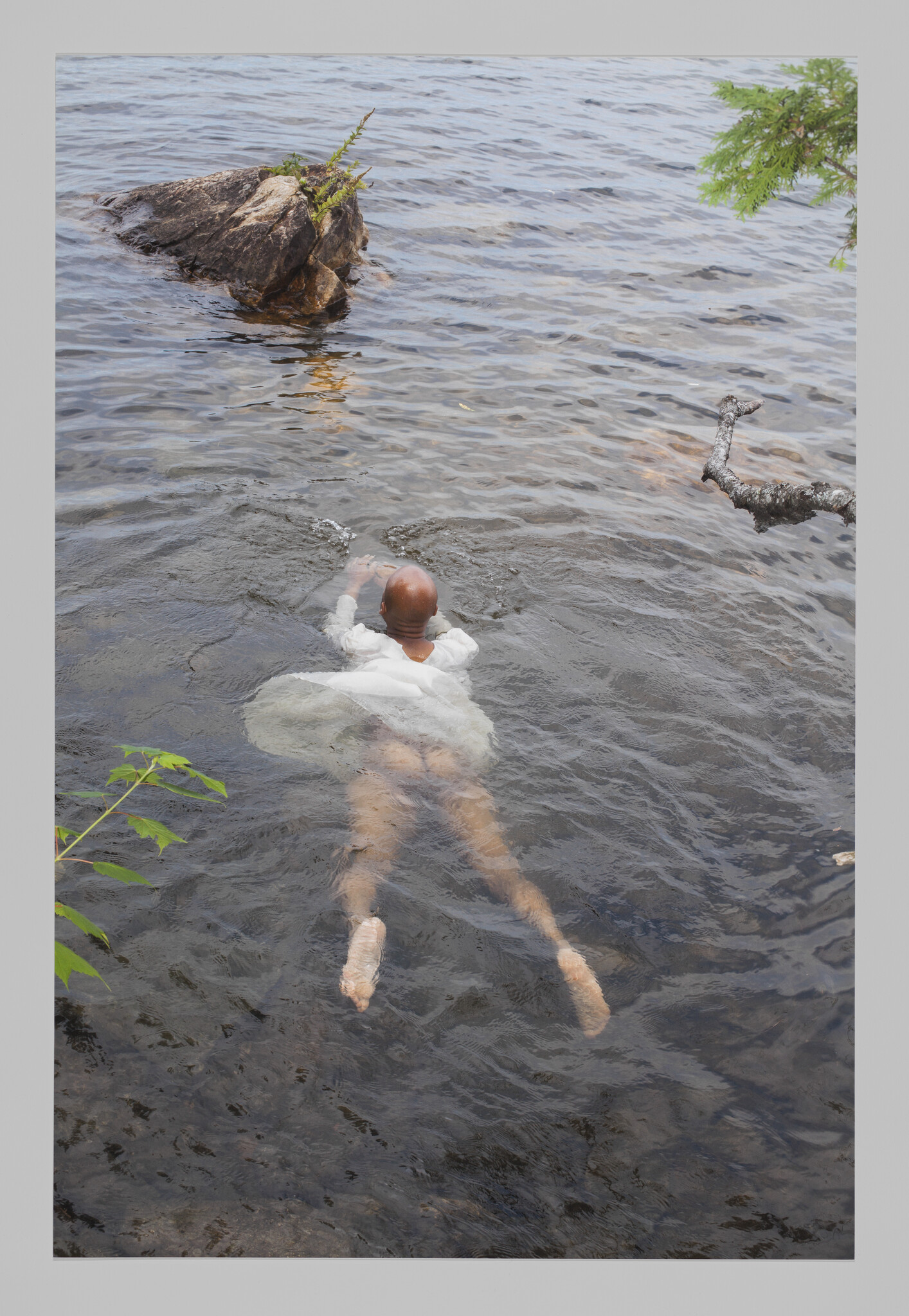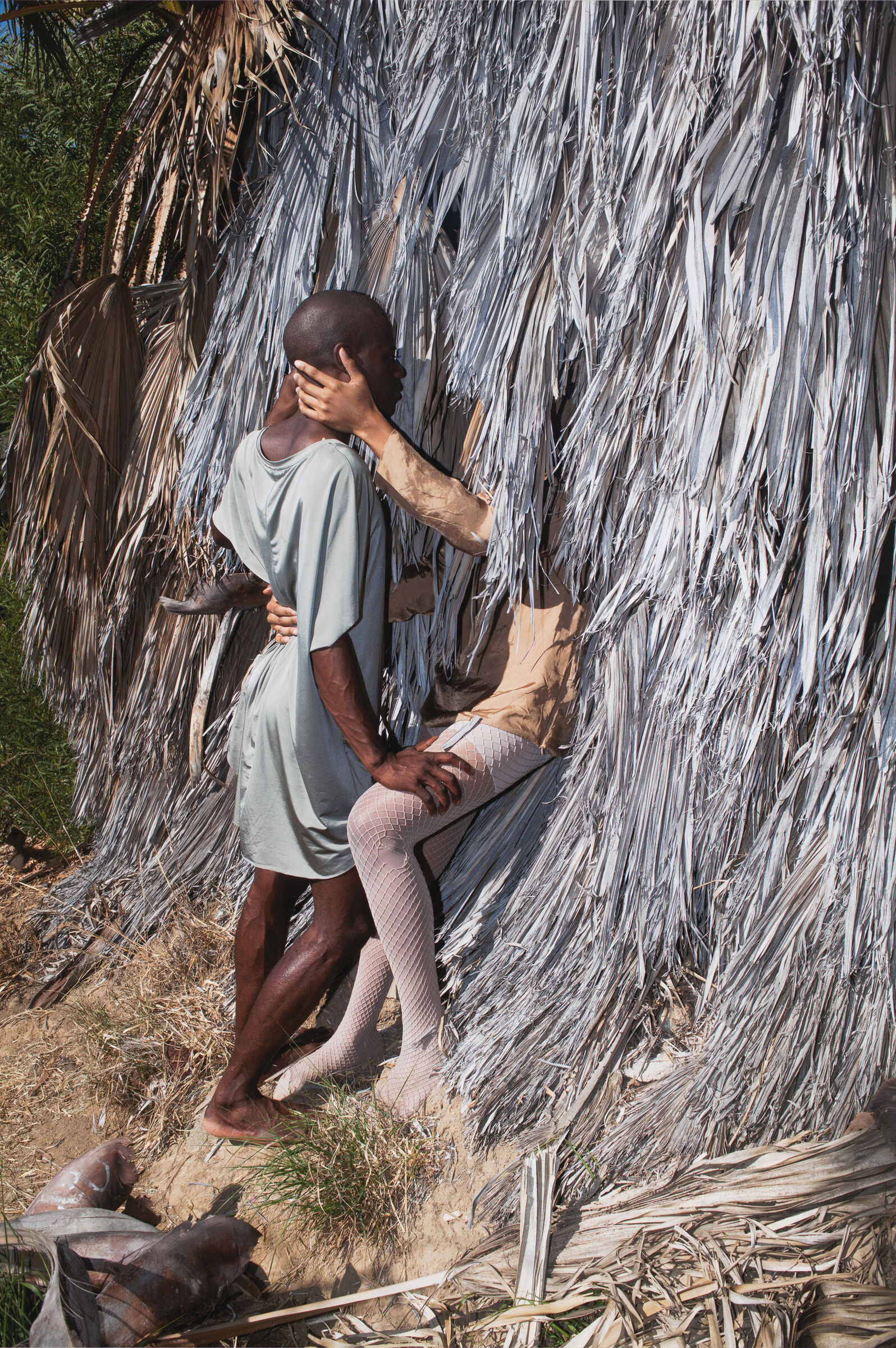Nah by D’Angelo Lovell Williams is an inkjet print, measuring just over 44 inches high and 29 ½ inches wide. It is a self-portrait of the artist, who is almost entirely submerged in a body of water that appears to be a lake or river surrounded by trees. They are a Black person with a bald head that rises above the water as they swim away from the camera, their arms outstretched in front of them and their legs outstretched behind them. The water in front of their arms is disrupted, and their feet are stretched outwards, indicating movement. Lovell Williams is wearing a white, long-sleeved gown, which they had previously worn to a drag ball. It has been made slightly translucent by the water. Of their choice to wear the dress in this photograph, Lovell Williams says, “I definitely wanted it to look ghostly.” The skirt of the gown billows upward in the water, exposing the artist’s buttocks and legs.
The water around Lovell Williams is clear, with minimal waves and ripples. The photo was taken in daylight, making visible some of the gray and brown rocks at the bottom of the water. The body of water stretches to all four edges of the image. The artist took this picture off the coast of Skowhegan, Maine, while they attended an artist residency. At the top left corner of the image, above the artist’s outstretched arms, a large rock juts out from underwater, with a few long green plants growing out of it. Verdant leaves poke inward at the top right corner of the image, while a gnarled, leafless branch curves upward on the right edge. A stem with wide green leaves stretches diagonally over a small section of the water parallel to Lovell Williams' left leg on the left edge.
Lovell Williams’ work deals with cultural histories as well as their own personal and familial histories. Bodies of water are a frequent site for their photography. The setting holds many meanings for them. One reference is an 1803 rebellion by enslaved Igbo people. While on a boat held captive en route to Georgia, the group committed mass suicide after rising up and taking control of the ship. According to the artist, the title of the work refers to refusal as a form of resistance, as well as Lovell Williams’ refusal of “anything or anyone that keeps Black and Queer people from living full lives and succeeding.”


